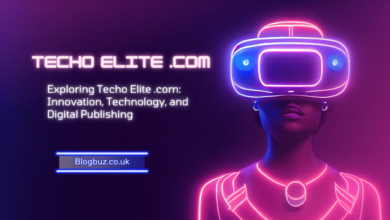The Terrifying Fusion of Technology and Fear: AI Art Horror IV Needles

In horror art, AI-generated images are revolutionizing the genre by introducing a chilling new theme: IV needles. This article explores the unsettling appeal of AI Art Horror IV Needles, diving into its psychological impact, artistic innovation, and the complex emotions it provokes. This niche in horror art utilizes artificial intelligence to create terrifying and profoundly thought-provoking visuals that reflect broader societal fears and anxieties.
The Evolution of Horror Art and AI’s Role
Horror art has a long-standing history of evoking fear, dismay, and contemplation of the darker aspects of human psychology. Traditional themes have ranged from supernatural entities to the grotesque and macabre. However, integrating AI into this genre has led to a transformative shift, with technology enabling the creation of imagery that pushes the boundaries of traditional horror aesthetics.
AI’s ability to synthesize and manipulate data has introduced a new layer of creativity. By analyzing vast amounts of horror imagery and thematic elements, AI can generate unique and complex visuals that might be beyond the scope of human imagination. The inclusion of medical imagery, particularly IV needles, leverages deep-seated human fears associated with pain, medical procedures, and vulnerability.
Psychological Impact of IV Needles in Horror Art
The fear associated with IV needles is profound, tapping into the universal anxiety about medical interventions and the invasion of the body. This fear is known as trypanophobia, which is a widespread phobia of needles and medical injections. AI horror art exploits this fear by depicting IV needles in scenarios that amplify feelings of discomfort and helplessness.
In AI-generated horror art, needles often appear in exaggerated, dystopian settings, sometimes transforming into elements that resemble torture instruments rather than medical tools. These images can evoke a visceral reaction, representing physical pain and a loss of control—critical components in influential horror art.
Artistic Innovations and Techniques
Artists like Mario Klingemann and Refik Anadol have pioneered integrating AI into horror art. Klingemann’s work often explores the boundaries between pain and art, using AI to create visuals that leave viewers uneasy. Anadol’s installations, meanwhile, merge data-driven algorithms with immersive experiences, creating environments where horror and technology intersect in profound ways.
AI art software utilizes techniques such as Generative Adversarial Networks (GANs) and neural networks. These tools allow AI to experiment with different textures, colors, and forms, producing intricately detailed and emotionally impactful artworks. The images often feature a haunting blend of realistic and surreal elements, enhancing the horror theme with a unique aesthetic that can be beautiful and disturbing.
The Role of Color and Composition in AI Horror Art
Color in AI horror art, especially involving IV needles, is critical in setting the tone and enhancing the emotional impact. Dark hues and sharp contrasts dominate, creating a foreboding atmosphere. Eerie greens and deep reds are particularly effective, symbolizing sickness and blood. Light and shadow interact, providing depth and making the scenes more realistic and immersive.
Composition in AI-generated horror art is deliberately structured to guide the viewer’s eye and evoke specific emotional responses. The placement of needles, the direction of shadows, and the perspective of the images can all influence how the artwork is perceived, often leading to a startling or disturbing revelation.
Ethical Considerations and Future Directions
Ethical considerations become increasingly important as AI evolves and becomes more sophisticated in its artistic capabilities. The potential for AI art to disturb, frighten, or even traumatize viewers with its realistic depictions of horror themes like IV needles must be balanced against artistic freedom and expression.
Looking forward, the future of AI horror art appears rich with possibilities. Technological developments in AI could result in more personalized horror experiences, where artworks adapt to individual viewers’ fears and emotional responses. Moreover, integrating virtual reality (VR) and augmented reality (AR) could make AI horror art more immersive, allowing people to ‘step into’ the terrifying worlds AI creates.
Conclusion
AI Art Horror IV Needles represents a fascinating technology, art, and psychology convergence. It challenges our perceptions of fear and discomfort, pushing us to confront our deepest anxieties. The capabilities of AI technology will grow as it develops, as the complexities of AI-generated horror art continue to intrigue, disturb, and captivate audiences worldwide.
FAQs on AI Art Horror IV Needles
What is AI Art Horror IV Needles?
AI Art Horror IV Needles is a subgenre of digital art created using artificial intelligence that focuses on horror themes involving IV needles. These artworks typically evoke solid emotional reactions by incorporating medical imagery and themes of vulnerability and fear.
How is AI used to create horror art involving IV needles?
AI utilizes algorithms like Generative Adversarial Networks (GANs) and neural networks to manipulate images and themes. These technologies allow AI to blend various elements, such as medical imagery and surreal environments, to create unique and unsettling visuals that might be challenging for human artists to conceive.
Why do artists choose IV needles as a theme in horror art?
IV needles symbolize pain, vulnerability, and invasive medical procedures, tapping into common fears and phobias. In horror art, these elements are exaggerated to heighten the emotional impact and evoke a visceral response from the audience.
How does AI art differ from traditional horror art?
AI art can incorporate detail and a blend of elements beyond human capabilities. It also allows for experimentation with abstract forms and surreal combinations that can enhance the artwork’s eerie and unsettling nature.
What is the future of AI in horror art?
The future of AI in horror art includes more personalized and interactive experiences, possibly integrating technology such as augmented reality (AR) and virtual reality (VR). These advancements could lead to more immersive and emotionally engaging horror art experiences.
You May Also Read: Bones Asura Scans: Bridging the World of Manga to Global Audiences




